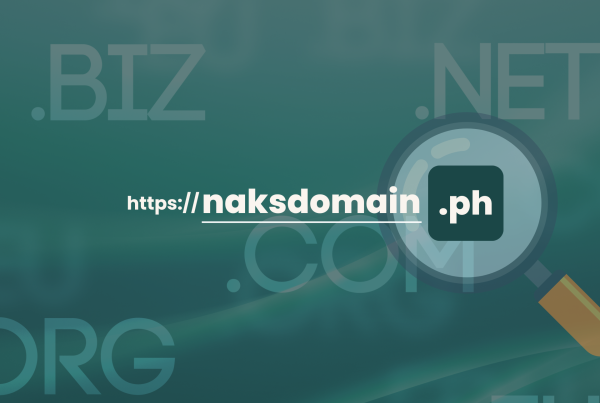Updated: 05 October 2023 • 13 minutes Read
Selecting the perfect domain for your website can be daunting, especially if you’re unsure about the differences between domain types. Your domain is more than just an address; it symbolises your brand’s identity and professionalism. An inappropriate domain choice can make users perceive your site as untrustworthy or suspicious. To create a website that leaves a positive impression on your audience, understanding the types of domains and how to choose the right one is crucial.
This article will explain the types of domains and how to choose a recommended domain.
Article table of contents:
- What is a domain?
- Top 5 recommended top-level domains
- Differences between domain types
- How to choose a domain name?
What is a domain?
At its core, a domain is a string of characters that functions as a unique identifier for locating a server on the vast landscape of the internet. Imagine it as an address, allowing users to pinpoint the exact location of a website or online service. A website’s address, technically known as a Uniform Resource Locator (URL), typically follows a structure like “https://example.com/”, with “example.com” representing the domain.
Following types of domains:
- Own Domain means you acquire a domain independently through a domain registration company under an annual contract. It’s entirely yours, and you can use it for any website or service you desire. As long as you renew your contract, your ownership rights remain secure, and another user or registrar cannot claim the domain.
- A subdomain is a domain that’s further divided into additional domains. You can append any character string separated by “.” (dot) to the primary domain. It is commonly employed when establishing an additional site or section under your primary domain. For instance, “blog.example.com” can serve as a subdomain of “example.com.”Users with their domains can specify any string for subdomains without concerns about overlapping with subdomains under other domains.
- A shared Domain is a domain provided to multiple users within a web service. The mechanism is akin to subdomains but is typically used to distribute a service’s functionality among several users.Example: If a service uses the domain “example.com,” subscribers might receive subdomains like “blog1.example.com.”Unlike own domains and subdomains, users of shared domains generally have a limited say in selecting their character strings. They can only utilise the functionalities provided by the service.
Domains are the digital addresses of the internet, and selecting the right one is a crucial step in establishing a distinct online identity for your website or service. Whether you choose to go with your domain, a subdomain, or a shared domain, the key is to find a string of characters that aligns with your goals and aspirations on the web.
 What you should know about basic domain knowledge is popular TLDs.
What you should know about basic domain knowledge is popular TLDs.
When diving into domain names, understanding the significance of top-level domains (TLDs) is fundamental. A TLD is the character string that appears after the dot at the end of a domain name. For instance, in “example.com,” the “.com” portion represents the TLD.
There are over 1,000 different TLDs available on the internet. These range from the familiar to the niche, offering unique options for web addresses. Among many TLDs, “.com” is among the most popular and recognisable choices.
Many website owners opt for “.com” domains because they are perceived as trustworthy and prestigious. Therefore, securing these TLDs can be challenging due to their popularity. Here are the top 5 recommended top-level domains:
- .COMIt is globally the most popular and widely recognised top-level domain (TLD).While its original designation was “Commercial,” its versatility has made it the go-to choice across diverse fields, transcending its initial purpose. Many renowned domestic and international websites and services proudly bear the “.com” TLD.The demand for “.com” domains is exceptionally fierce among users worldwide. As a result, securing a specific “.com” domain, especially those featuring short alphanumeric combinations and meaningful words, can be highly challenging.Prominent websites and services like google.com, twitter.com, facebook.com, and youtube.com exemplify the popularity and widespread usage of the “.com” TLD.
- .NETIt is a notable top-level domain (TLD) with the inherent meaning of “network,” and it proudly stands as the second most popular domain globally, following “.com.”It often serves as the preferred alternative when securing a “.com” domain proves elusive. While it may not rival the competitive intensity of “.com,” “.net” remains a highly sought-after domain extension.Given its inherent “network” connotation, “.net” domains are frequently embraced by websites and services that revolve around technology, networks, and related themes.
Prominent websites like 5ch.net and pixiv.net are examples of websites that utilise the “.net” TLD.
- .ORGA top-level domain that means “organisation.”Established initially with non-profit entities in mind. It is a preferred choice for NGOs, NPOs, academic institutions, and more. While its roots lie in the non-profit sector, “.org” has found applications beyond its original purpose. Now, it’s also used for various purposes, including commercial ventures, online communities, and educational platforms.Some have raised concerns about phishing scams associated with “.org” domains. However, it’s important to note that such issues often stem from specific instances, like the use of dynamic DNS services like “duckdns.org,” rather than “.org” itself being untrustworthy. “.org” remains a legitimate and respected TLD.Prominent websites like wikipedia.org, the world’s beloved free internet encyclopedia, are a prime example of a “.org” domain used for a significant and globally recognised online platform.
- .XYZIt is an intriguing and increasingly popular top-level domain (TLD) that sparks curiosity with its unique combination of the last three letters in the alphabet.Although the string carries no specific meaning, its versatility allows it to serve many purposes across the digital landscape. It can be seamlessly adopted for various purposes, from personal blogs and portfolios to business websites and creative projects, granting users the freedom to craft unique online identities that resonate with their goals and aspirations.One notable moment that drew global attention to “.xyz” was its adoption by Alphabet, Google’s renowned holding company, using “abc.xyz” domain name as the official website, highlighting this distinctive TLD’s potential.
- .INFOHas gained recognition and is increasingly recommended for specific use cases.As the name implies, the .info domain is tailor-made for websites prioritising information sharing. Whether you’re running a blog, an online encyclopedia, a knowledge base, or any platform disseminating valuable information, .info provides a meaningful and relevant web address that signals your content’s primary focus.While .info is inherently associated with information-based websites, it’s not pigeonholed into a single niche. Its versatility allows it to adapt to various purposes. Whether you’re launching a personal blog, a business site, or an educational platform, .info can accommodate diverse content types, making it a versatile choice.
The most notable moment for the .info domain was its “Sunrise Period.” During this phase, trademark holders were given priority access to register domain names that matched their trademarks under the .info extension. This period aimed to protect intellectual property rights and prevent cybersquatting on .info domains.
However, the launch of .info faced some challenges and controversies. Due to the high demand for specific domain names during the Sunrise Period, there were technical glitches, disputes, and trademark conflicts. Some trademark holders found it challenging to secure the exact .info domain names they wanted, leading to legal disputes and debates about the fairness of the allocation process.
Despite these initial challenges, the .info domain has since evolved and become a respected and recognised TLD online. It has found its place alongside other popular TLDs like .com, .org, and .net, and it continues to be used for a wide range of websites, particularly those focused on sharing information and knowledge.
 Differences between domain types that you should know about
Differences between domain types that you should know about
Top-level domains (TLDs) come in various types, and understanding their differences is crucial when selecting the right domain for your website. Broadly categorised, there are two primary types: “gTLD” (Generic Top-Level Domain) and “ccTLD” (Country Code Top-Level Domain), each with its distinct origin and purpose. Let’s delve into these TLD categories and explore what sets them apart.
- gTLD (Generic Top-Level Domain):
gTLDs encompass various domains that relate to specific areas or industries. Well-known examples include “.com,” “.net,” “.org,” “.edu” (for educational institutions), and “.gov” (for government-related entities).Over time, the gTLD category has expanded to include various options, including what’s often referred to as “new gTLDs.” These emerged after 2000 when conditions for domain registration were significantly relaxed. Examples of new gTLDs include “.biz” and “.info.” - ccTLD (Country Code Top-Level Domain):
ccTLDs are associated with specific countries or regions and are represented by two-character codes based on the ISO 3166 country codes. For instance, “.ph” corresponds to the Philippines.Some ccTLDs can be acquired from anywhere worldwide, while others are limited to registration within the associated region. This distinction depends on the policies set by the respective country or region.
Key Differences and Considerations:
- Purpose: gTLDs typically have a broader and more versatile scope, catering to websites and organisations worldwide. In contrast, ccTLDs often carry geographic or regional significance, making them suitable for entities closely tied to a specific location.
- Global vs. Local: gTLDs are inherently global and suitable for businesses or individuals with international aspirations. ccTLDs can help establish a local or regional identity, making them appealing to businesses targeting specific geographic markets.
- Availability: While gTLDs like “.com” or “.org” offer broad availability and competition, ccTLDs may have restrictions and specific requirements imposed by the respective country’s registry.
- Relevance: Your choice between gTLDs and ccTLDs should align with the purpose and reach of your website. If you aim for a global presence, gTLDs are often the preferred choice. For localised or regional projects, ccTLDs may be more appropriate.
gTLDs and ccTLDs serve different purposes and come with unique considerations. Your selection should align with your website’s objectives, target audience, and geographic scope. Understanding these distinctions allows you to make an informed decision and choose the most fitting domain type for your online presence.
 How to choose a domain name?
How to choose a domain name?
Choosing the perfect domain name for your website is a pivotal decision that can significantly impact your online identity. While the technical functionality and search engine evaluation remain consistent regardless of the character string you choose, the impression your domain name conveys to users is of utmost importance. Once a domain name is decided, it can be challenging to modify, making thoughtful selection essential to avoid future regrets.
Let’s take a look at three points to keep in mind when deciding on a domain name.
Make your site relevant.
Your domain serves as the emblem and storefront of your website, making it crucial to select a string that resonates with your content.
Using the site’s name as the domain is common; considerations like length and availability might lead to using an abbreviation or a combination of initials. While some sites may have domains unrelated to their content, this practice can sometimes diminish trust and credibility in users’ eyes.
It’s advisable to align your domain closely with your site’s content to establish a trustworthy online presence. This cohesion reinforces the site’s purpose and reinforces user confidence.
By avoiding disparities between your domain and site content and opting for closely related strings, you enhance the user experience and ensure your site’s authenticity.
Choose the shortest domain string possible.
Short domain names hold many advantages; they are highly visible and memorable for users. It can also seamlessly integrate into email addresses and serve as user-friendly account names on social networking platforms (SNS).
However, the brevity that makes them advantageous also makes them highly sought after. In the context of the widely-used “.com” top-level domain, acquiring a short string is increasingly competitive. With nearly all three-letter combinations exhausted, even four or five-letter words with meaning have been snatched up. This competitive landscape poses a challenge for those seeking concise domains.
Exploring alternative top-level domains (TLDs) may be wise for those set on securing a short domain. Lesser-known TLDs can offer opportunities for shorter strings, presenting a viable option for those looking to strike a balance between brevity and availability.
Avoid minor top-level domains.
Avoid top-level domains that are entirely unknown.
When selecting a top-level domain (TLD) for your website, it’s essential to strike a balance between availability and reputation. While over a thousand TLD options are available, opting for completely unknown or minor TLDs can have unintended consequences.
However, minor top-level domains are often used by adult or illegal sites, which not only gives a wrong impression to users but also makes them more likely to be judged as high-risk by the security software.
It’s best to avoid top-level domains that are little known.
This time, we explained the basic knowledge of domain selection.
Domain selection is usually done at the beginning of a site’s launch, but it is not uncommon for work to stall because finding the most suitable domain is challenging. The tricky thing about a domain is that it largely depends on your luck, and even if you prepare a large budget or spend a lot of time searching, there is no guarantee that you will get the ideal one.
If you want to secure a domain that perfectly matches the title and concept of your site, you can search for a domain at the planning stage before launching your site and then solidify your site plan based on available domains.
Topics: Domain
Don’t forget to share this post!


